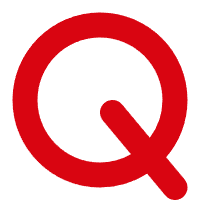
Must I choose an LED display screen manufacturer when installing an LED display screen?
Many manufacturers sell LED displays on the market. Some are manufacturers that produce unit boards and provide assembly and installation services. Others don't produce unit boards or accessories; they only provide assembly and installation services. Many customers prefer LED display manufacturers. However, this choice isn't always the best.
Misconception 1: LED display manufacturers are large companies with reliable quality.
Undoubtedly, large companies, even listed companies, generally ensure quality. However, large companies may treat smaller clients poorly. This aside, with the development of the LED display industry and the maturity of production technology, producing LED display accessories is not difficult and doesn't require significant investment. This leads to a wide disparity in the strength and quality of LED display manufacturers, resulting in significant differences in product quality. Choosing an LED display manufacturer means choosing their unit boards and accessories, losing the right to choose products from other manufacturers. The quality is unknown, putting the risk entirely on the customer. Non-manufacturing companies, however, are directly affected by the quality of unit boards and accessories used, as it impacts their reputation and customer trust. If problems arise, the company bears the risk. Therefore, they carefully select high-quality, cost-effective products, effectively ensuring quality for the customer.
Misconception 2: LED display manufacturers offer lower prices.
Many LED display manufacturers mainly wholesale unit boards and accessories. They have many channel agents, and to protect their interests, their prices are generally higher than those of agents. Therefore, directly contacting an LED display manufacturer isn't necessarily cheaper.
Misconception 3: LED display manufacturers are powerful and provide products that better meet customer needs.
LED display manufacturers mainly produce and wholesale unit boards and accessories, often only undertaking LED display projects as a secondary business. They may not invest much in this area. Non-manufacturing companies, however, can focus on understanding customer needs and integrating solutions, often providing better products that better meet customer needs.

What is the total thickness of the indoor high-definition electronic large screen?
Indoor environments are generally smaller, and considering the daily maintenance of the display screen, indoor LED electronic screens generally do not need a box body, and generally use magnetic installation, which is more convenient for maintenance. The thickness of the screen itself is 2.5cm, and with the power supply and steel structure, the total thickness can be controlled to about 10cm.

How to solve the electrostatic and lightning protection problems of LED displays?
When manufacturing LED displays, factory workers must wear anti-static wrist straps when handling LED components to ground the static electricity generated by the human body. LED displays are exposed to static electricity during storage and transportation; electrostatic shielding can weaken the impact of external static electricity on electronic components. Common methods include using anti-static shielding bags and anti-static turnover boxes. Additionally, anti-static clothing provides some shielding against static electricity from the human body. Therefore, during handling and transportation, workers must wear cordless anti-static wrist straps and gloves, anti-static clothing, and anti-static shoes. They should also use anti-static material boxes, PCB anti-static racks, stainless steel turnover carts, and other specialized equipment to minimize direct human contact during transportation.

How to prevent short circuits and fires in LED displays?
1. When choosing a supplier, customers must remember not to choose low-price manufacturers. If the price is much lower than the market price, it means that the raw materials used are inferior;
2. LED electronic screens must undergo fire and waterproof testing before leaving the factory;
3. When technicians install on site, they must use a reasonable and correct wiring method, and the cables used must meet national standards.

What are the causes of short circuits and fires in LED electronic screens?
1. Improper wiring and cabling of the LED display screen; 2. Non-standard cables used; 3. Unreasonable power supply configuration for the LED display screen; 4. The LED display screen was not fire-tested during production, the PCB board was not coated with conformal coating, and inexpensive electronic materials were used.


